Linda F. Martin found her artistic voice through textile collage, but it took a long while to discover her gift for fiber art. In fact, it was only after her retirement that she became fascinated by collage and quilting as a means of expression. She had been a life-long arts lover, but her talent for telling stories with textiles was a gift she wasn’t aware of until later in life.
Serendipity led her to a quilt-making class and there she discovered her talent for story-telling, which she celebrates every day. Fusing colour, pattern and design Linda engages the viewer in conversation, expressing her identity and her thoughts. She feels grateful for the daily gift of opportunities to explore, create and connect.
Linda Martin hails from Hartford, Connecticut, US. She discovered collage fiber art in 2014 and has since received several awards for her vibrant and striking art quilts. Her works have also featured as book covers, and have been exhibited online, in galleries, and are in private collections.
In this interview, you’ll discover Linda’s story and how she stumbled across her hidden gift for quilting. In her own words, she likes to “Lift up the gift”. She harnesses that talent and delights in her art-making. Linda’s story is full of infectious joy. It will make you want to grab some fabric and thread, and nurture your own urges for creativity.
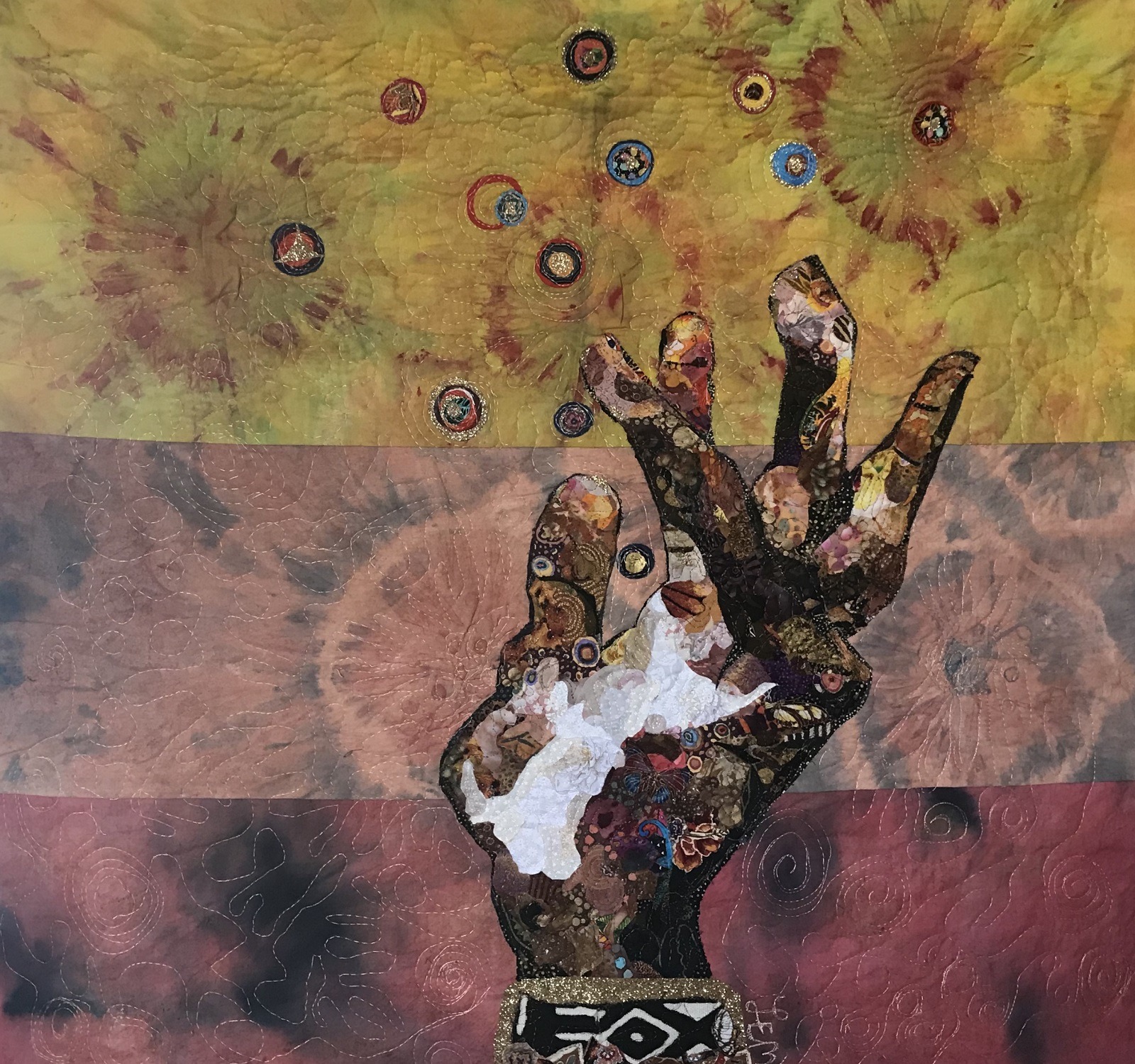
Starting with an apron…
TextileArtist.org: What initially attracted you to textiles as a medium? How was your imagination captured?
Linda F. Martin: My introduction to fabric and stitch began around the age of twelve when I made an apron during my Home Economics class in school, learning the rudiments of hand sewing. My apron, although basic, made me feel proud of my ability to follow the instructions, use a sewing machine and end up with something that I could wear!
I grew up in a housing project and was not able to attend camp programs. Instead, following that school year, my parents enrolled me into a “Summer Enrichment Program” provided by the housing project. The instructor taught the class members how to follow a pattern and make a two-piece dress with sleeves.
Using what I learned from those experiences, I began to modify simplistic patterns and create clothing for myself. I rarely strayed from using cotton fabric, but that was because I found it easy to work with.
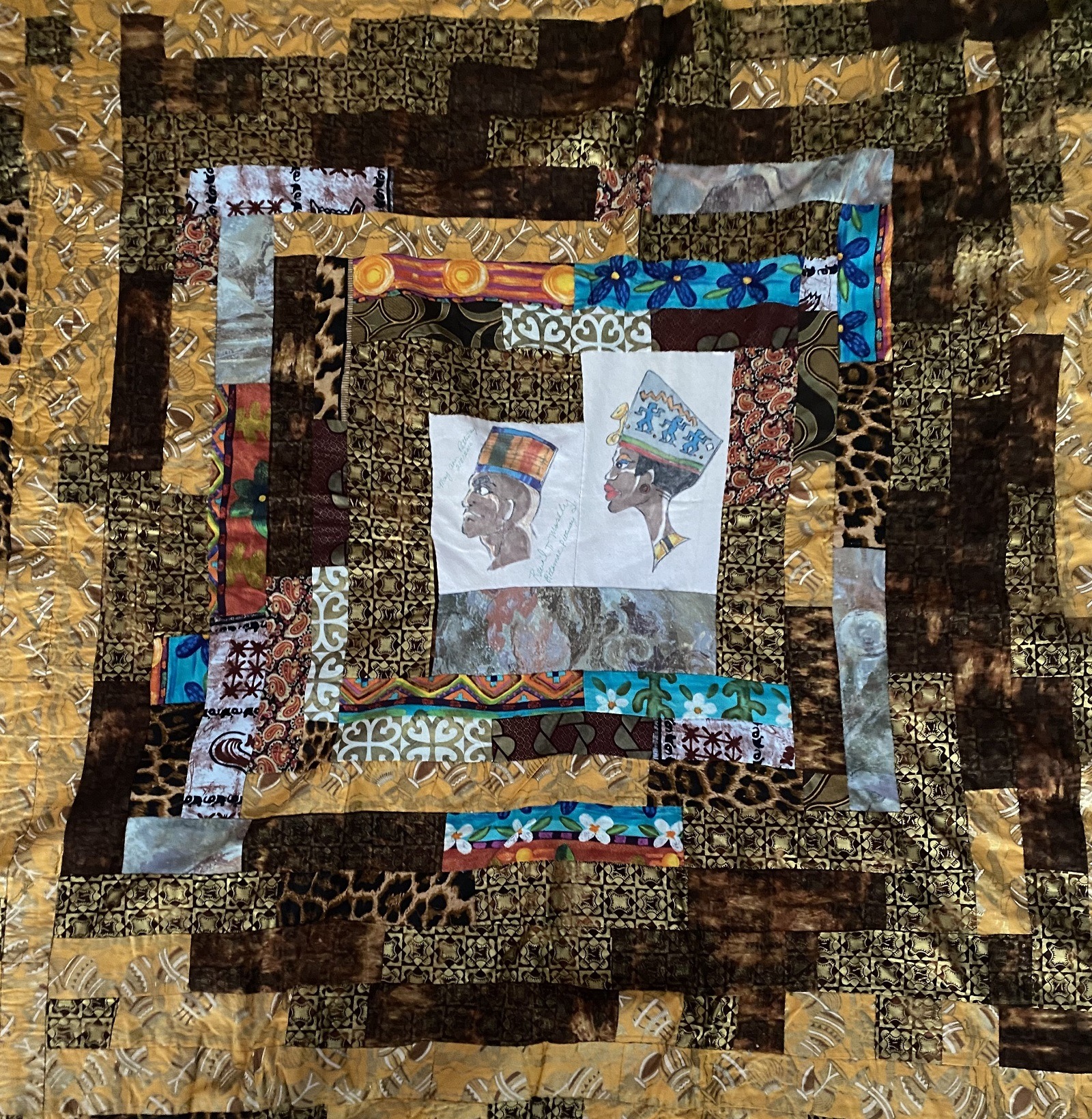
What or who were your early influences and how has your life/upbringing influenced your work?
My parents taught my brothers and me the importance of coordinating our clothing and taking good care of our attire. I grew up in a Christian, working-class home and community, where each Easter brought new clothes for us all. I would marvel at the outfits that Ms. Eunice Smith would make for herself and her daughter Alexis.
It is difficult to say who my early influences were because I did not begin my professional journey creating fiber art. I retired from a career as an Education Administrator in 2008, at the age of fifty-five.
My upbringing is why I do what I do. My parents stressed the importance of God in my life, knowing my family history and taking pride in who I am. In the same way, I taught my children to love God, your family and yourself, in that order. My primary desires are to pay homage to my ancestors and to teach my descendants while thanking my God for this gift.
I love stage performances because you can be transported to a new world by the set design and costumes. In early 2010, my mother-in-law and I went to the Hartford Stage to see the Play “Gee’s Bend.” The play chronicled the African American experience through the creation of various quilts by the women of Gee’s Bend.
Gee’s Bend is a small isolated community located along the Alabama River. Most of the people of Gee’s Bend can trace their ancestry back to the slaves on the Pettway Plantation, and the women of Gee’s Bend, and their ancestors, perfected the art of quilting.
In addition to attending the play, the Hartford Stage theatre offered a quilting class led by three women from Gee’s Bend. I attended the class, taking scraps of fabric from a pair of jeans that had images drawn on by a former student of my mother. It was there that I started my first quilt, and after this experience I became determined to continue the tradition of quilt making. I thought that I could help save the tradition. I had no knowledge of all the fabulous quilt-makers around the world.
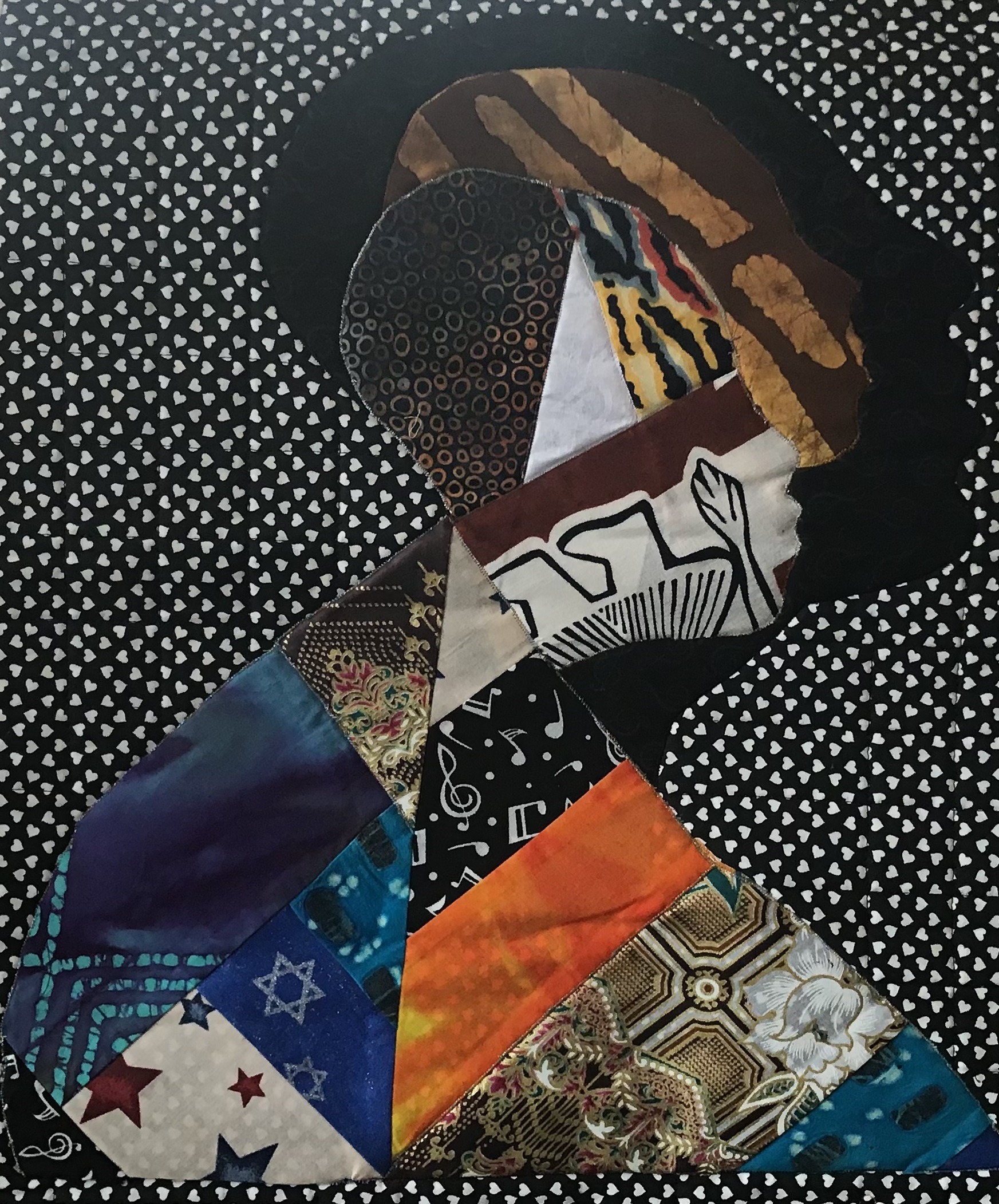
What was your route to becoming an artist?
While creating several bed quilts for family members I took fiber art classes by my mentor Edjohnetta Miller. In 2012, Edjohnetta told me that I was a fiber artist. I refused to accept the title because I did not believe that I had entered the sacred world of being an artist.
Edjohnetta entered a piece of my art into her exhibition “Edjohnetta and Friends” in January 2013. That was my first experience with exhibiting, and in 2014 I accepted the title of fiber artist.
Although I enjoyed making art, I knew that I wanted to make art through the process of quilting. I also knew that I was an improvisational quilter, as Edjohnetta had told me so. I always wanted to quilt by my own rules! It was difficult for me to stay within the confines of traditional quilters. I would start out following a specific pattern and soon after I would go off into my own design.
I took two very influential classes in 2014. I attended a portrait collage class lead by Bisa Butler. I still review the notes I took in that class. Then I completed a class in collage piecing by Susan Carlson. Although I found it difficult to follow her advice on colour value, Susan told me that if what I was doing worked for me, then I should continue doing it.
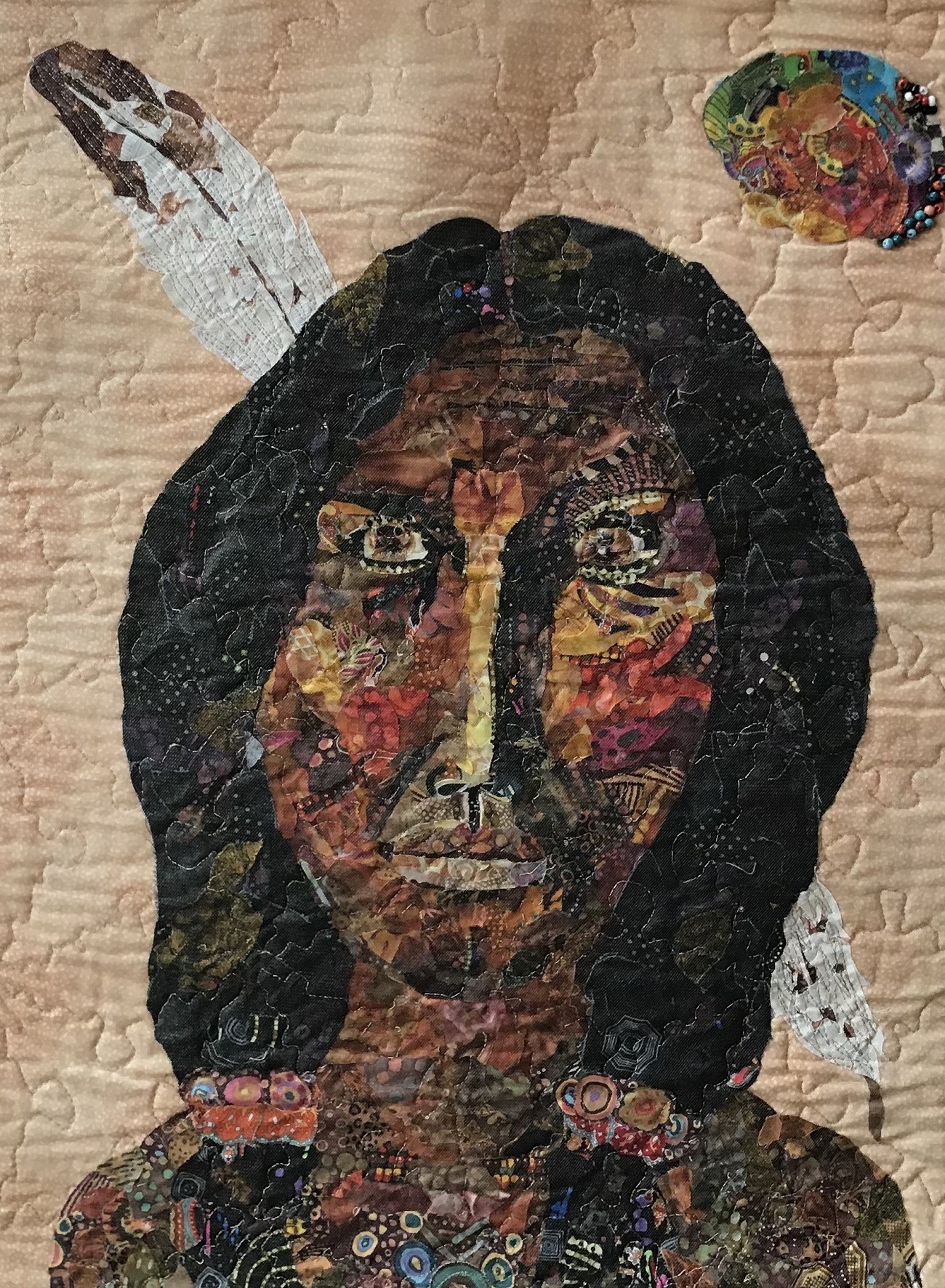
Stories emerging through fabric
Tell us about your process from conception to creation
Through my art I am able to engage in a conversation with the viewer about who I am, where I come from, what I see, and where I am going. The ideas for my images comes from these perspectives.
Whether I am preparing for a themed exhibit or just creating because I have a concept burning in my brain, I usually draw out ideas free-hand on paper. Sometimes I draw the image directly onto fabric. If the image is drawn on paper I use an electric light box to trace the image onto fabric. I don’t have any formal art training so I use online images or place mirrors to show me the shadowing and direction of light that I need to depict on my images.
I gather my fabric and apply pieces to the base image by pinning them. Once I am satisfied with the arrangement I glue them in place.
I layer my base image fabric with batting and backing fabric and then I begin quilting. I always use the process of machine free-motion sewing. My process does not involve drawing or painting on my images. What you see is entirely made of fabric or items of embellishment.
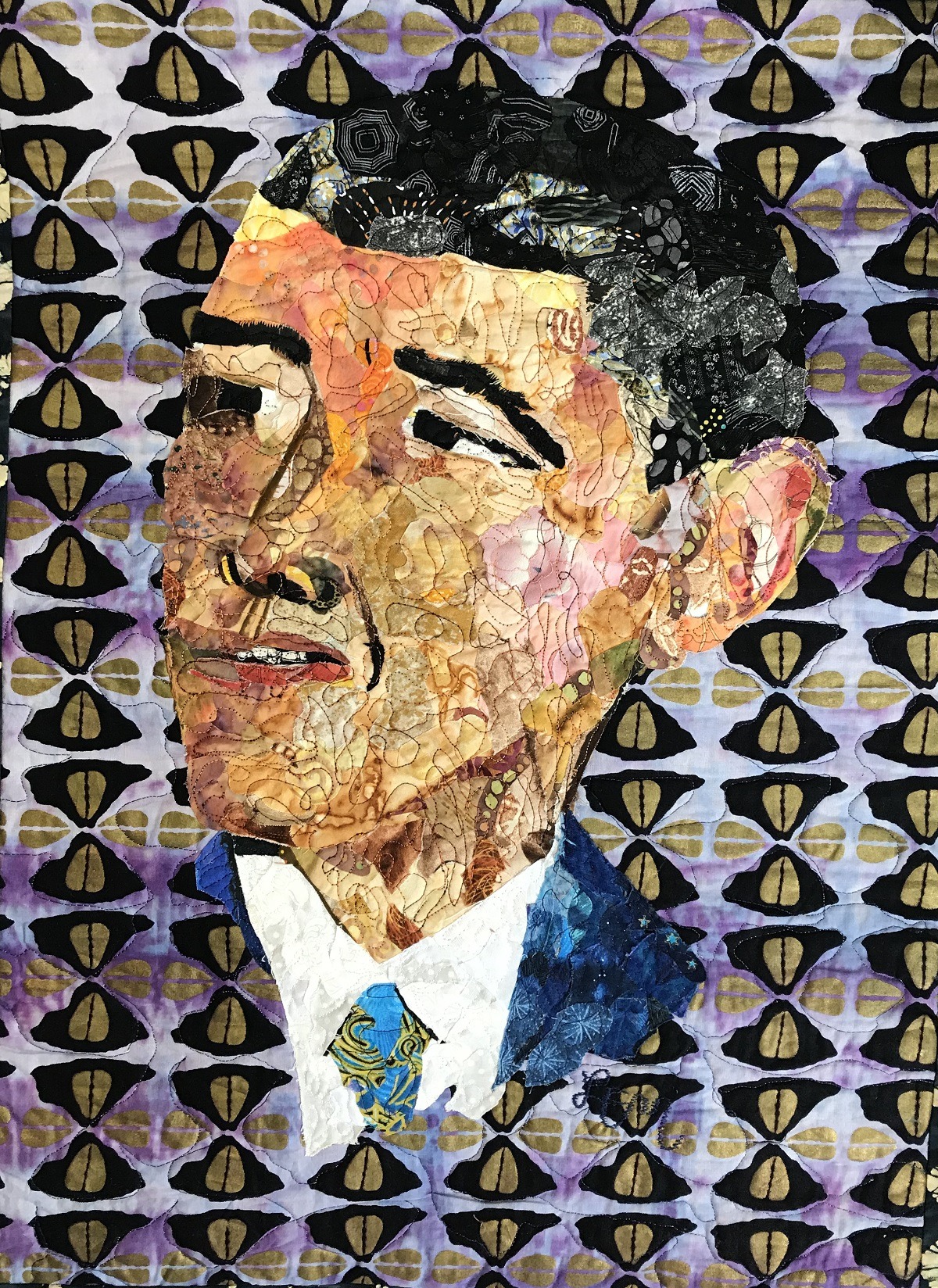
Tell us a bit about your chosen techniques and how you use them
My first quilts were hand sewn and while I love the thought of using the traditional method of quilting, using my sewing machine allows me to work much quicker.
My technique is basically drawn from a combination of what I learned from Bisa Butler and Susan Carlson. Bisa taught me the process of choosing which areas to begin with and how to layer the fabric. The processes of cutting certain shapes and gluing is from Susan. I don’t want to emulate any one particular artist so I have developed a technique that I think is unique to me. I am still developing.
I enjoy placing smaller images and symbolic characters within my quilts and challenging the viewer to find them. My work is not only for the more mature viewer; I want to engage the younger viewer to spend time viewing art and having a “conversation” with me.
When deciding to place a piece of fabric I usually ask myself, “Where do I want to take the viewer’s eye?”
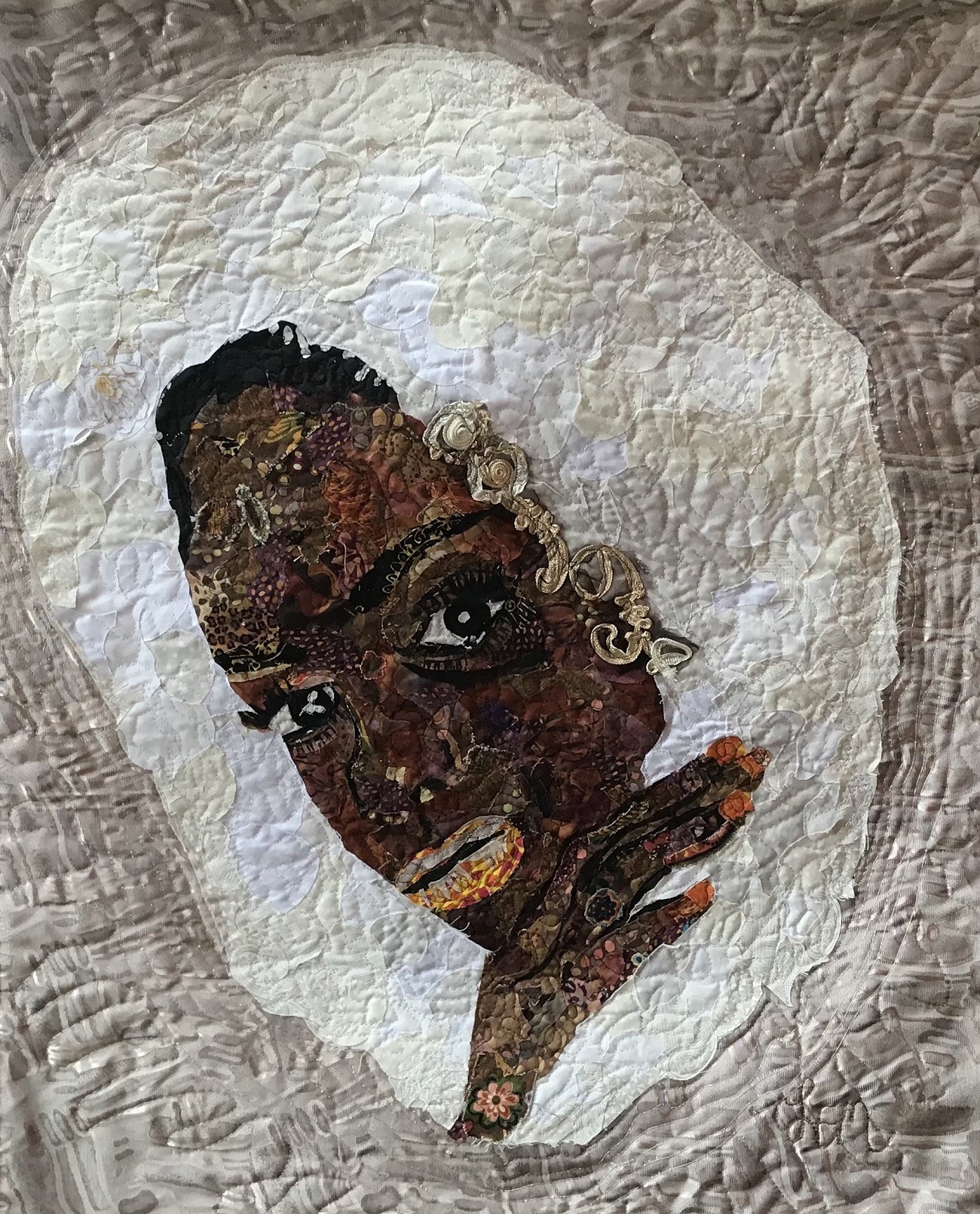
What currently inspires you?
I continue to be inspired by my desire to tell stories about my truth. I want to speak for my ancestors who couldn’t speak for themselves.
I am inspired by the beauty and diversity of my race and by my profound desire to give thanks to God.
My images often take on a life of their own. I start with an image in mind and that image often changes as I go along. Frequently, in the midst of a piece I will look at it and think, “What in the world are you doing?”
Even if I don’t like the piece I have learned to continue working, and eventually I am captivated by what I see.
My husband and son will also look at an unfinished piece and tell me what they like it, which also encourages me. My daughter has told me, “I wish that I could have such fun with a needle and thread.”
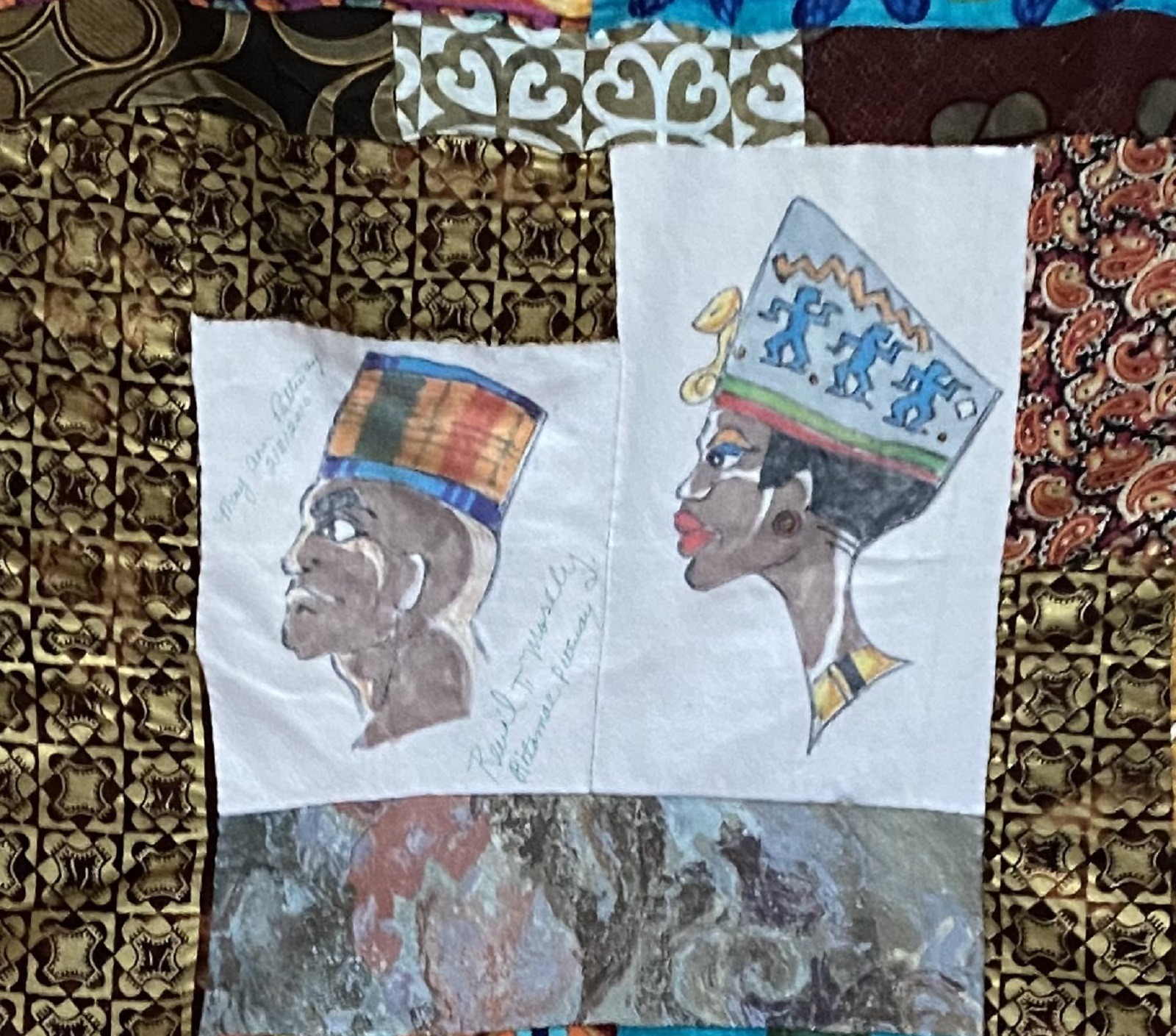
Inspiring connections
Tell us about a piece of your work that holds particularly fond memories and why?
My very first quilt would be the one that holds fond memories for me because it was started in a class by three women from Gee’s Bend. The fact that I sat with Mary Ann Pettway, Revel T. Mosely and Rita Mae Pettway and started my quilting journey continues to amaze me and I know that it was no-one but God who shepherds me along this journey.
The pieces of fabric that I bought to the Gee’s Bend session were taken from a pair of jeans. I had given them to my mother so her student could draw Egyptian images on them. The backing of the quilt is fabric that my mother-in-law gave to me.
I had the three women from Gee’s Bend sign and date the quilt. When I look at that quilt I think of the generosity and creativity of my people, my mother, Lillian G. Payne, her gifted student and my mother in-law, Odell V. Martin. It was my mother-in-law who accompanied me to the quilt class and later began quilting with me.
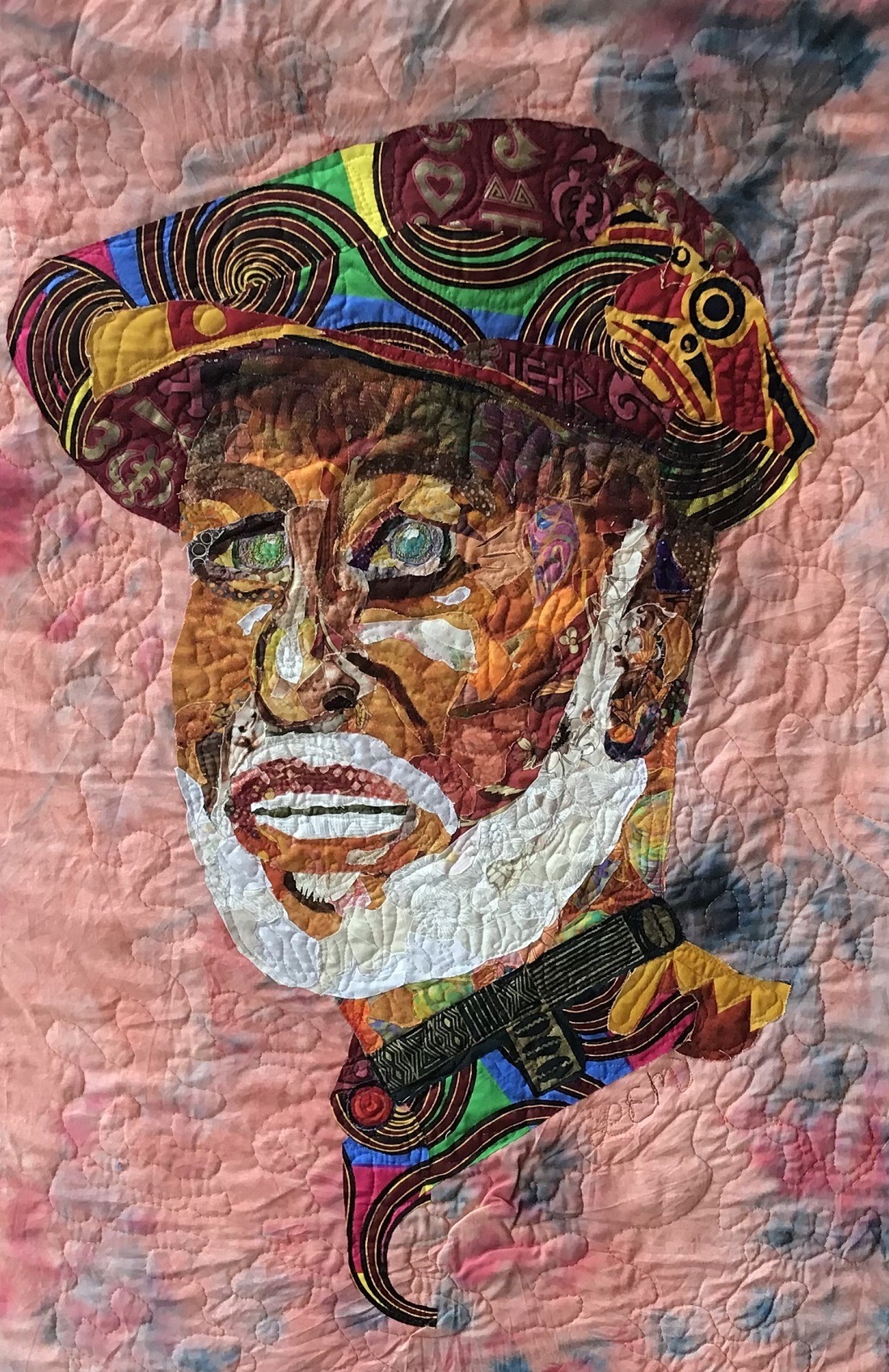
How has your work developed since you began and how do you see it evolving in the future?
My first quilts were bed quilts but it soon became too challenging for me to sew such large quilts on my domestic machine. I learned that often people did not appreciate the work necessary to produce such large quilts. I decided that wall hangings would be easier for me to handle and would allow me to display them in other locations than on a bed or a couch.
My first thirty wall quilts were made of appliquéd images sewn onto backings made of strips of fabric that I had sewn together. I knew that I wanted to create quilts made by collaged piecing and that is why I took those influential classes by Bisa Butler and Susan Carlson.
I don’t have a vision or plan of how my work will evolve. There is still so much that I have to say through my art and I am currently pleased with how I am saying it.
I love the way that Bisa Butler uses her knowledge of the symbols on African fabric to dress her images. I want to learn more about using symbols in order to expand my conversations and teachings through my art.
No matter how my art evolves, I will always remember to “Lift up the gift.”

For more information visit www.Coloredgirlart.com
If Linda’s joyfulness in her work inspired you, then why not share this interview with your friends on social media using the buttons below?
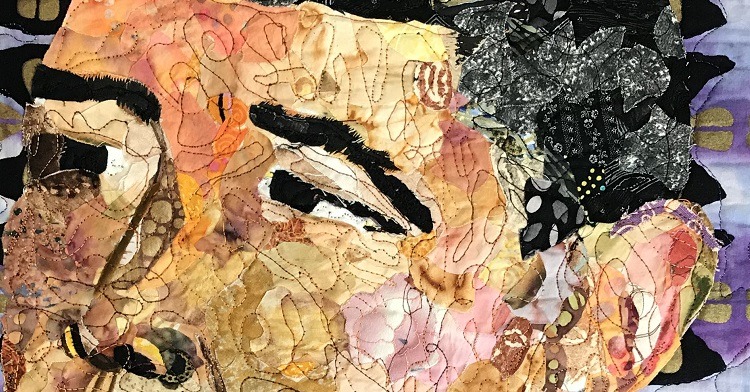
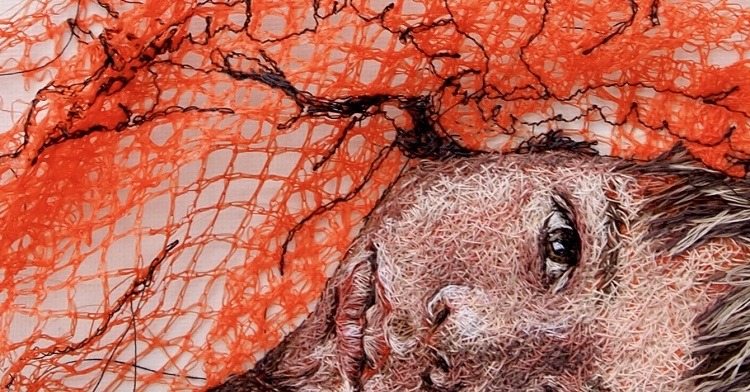
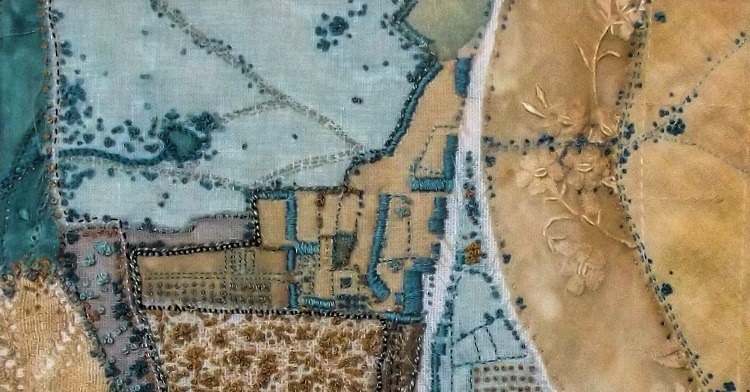
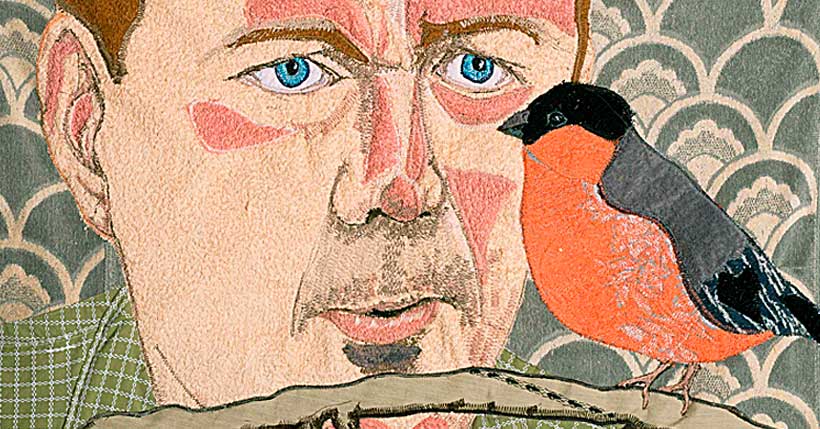
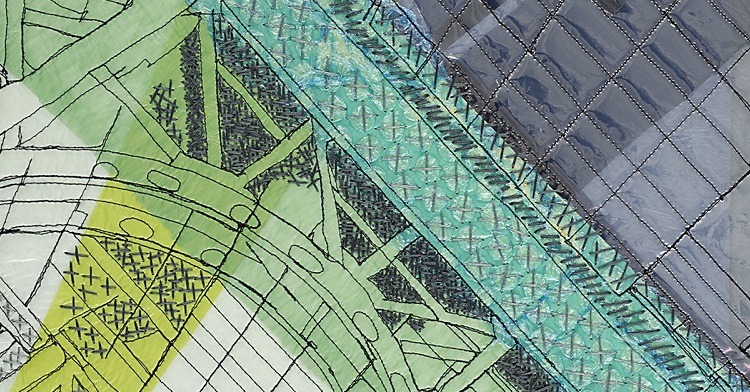
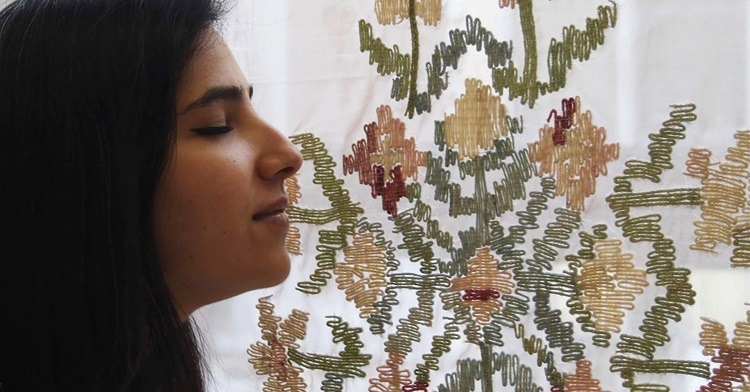
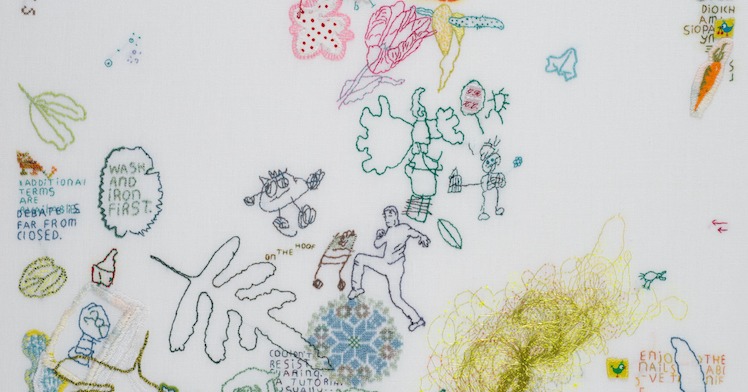
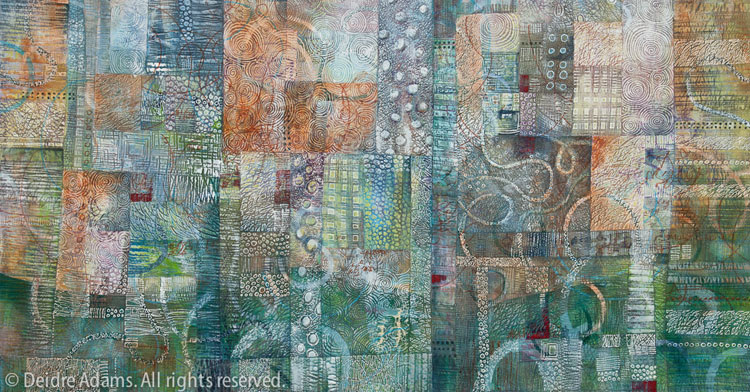
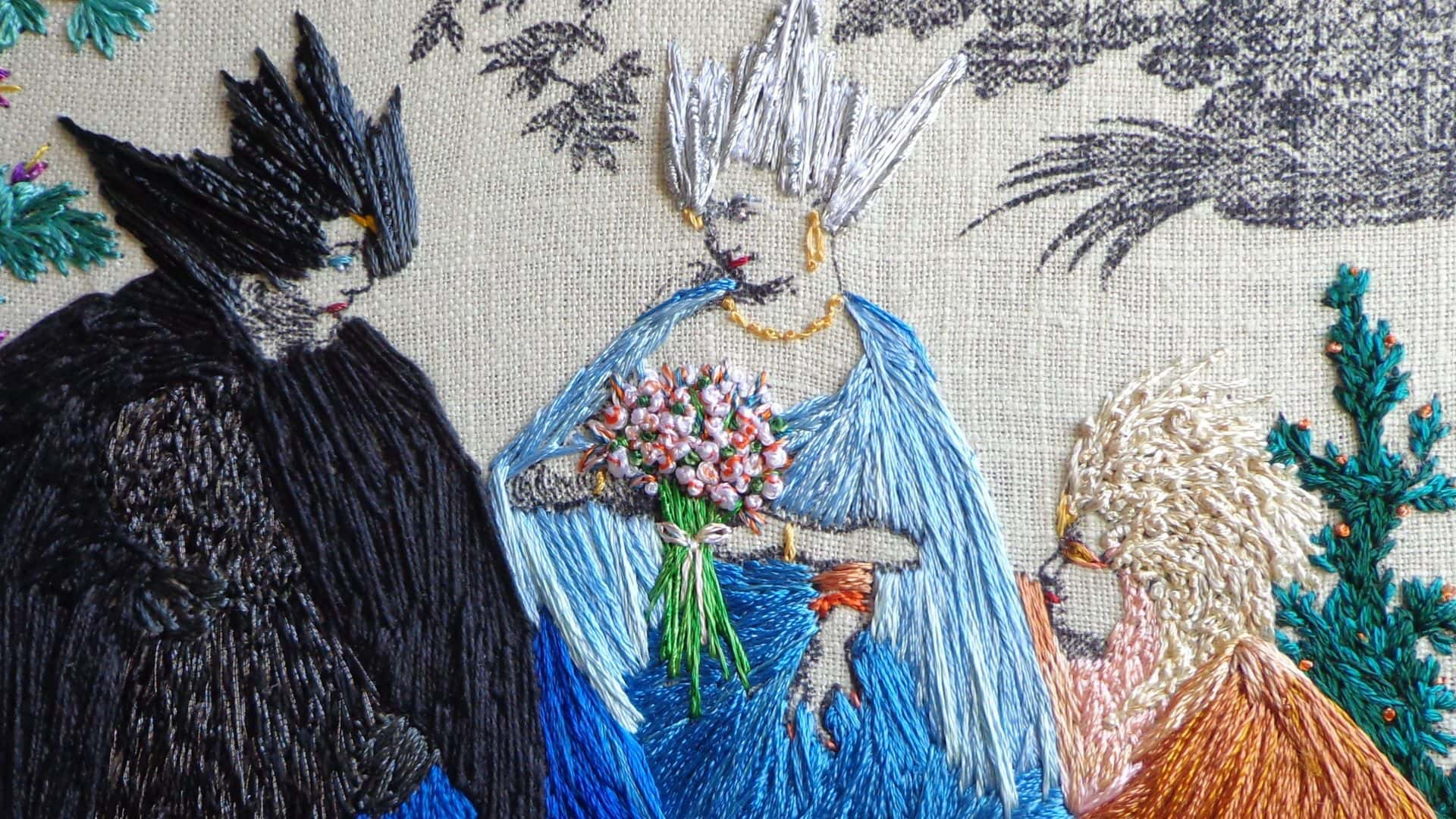
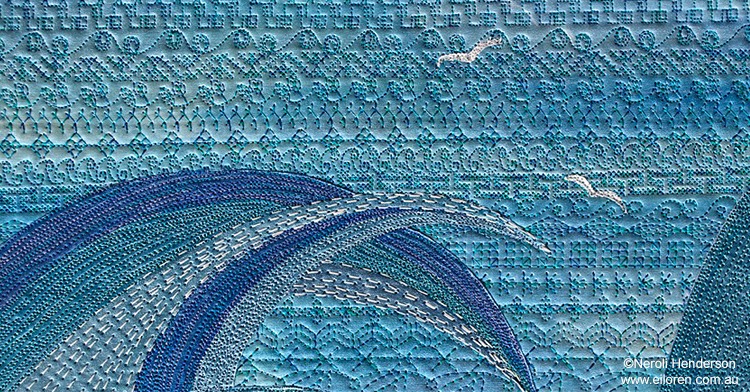
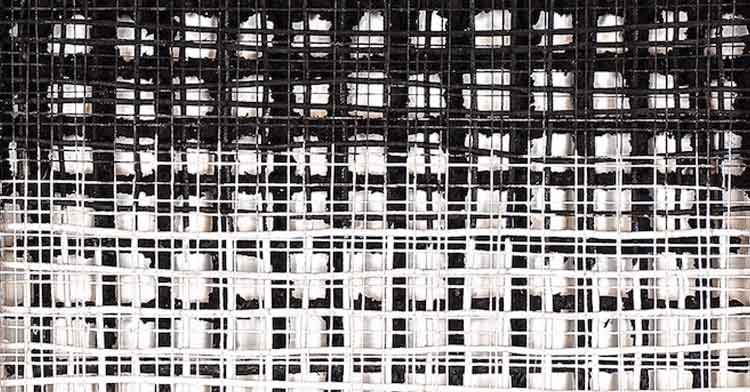
11 comments
Susi Ryan
I just met Linda today at the Mariposa Museum in Oak Bluffs MA. She is truly gifted and blessed.
Sandi Schrader
As you know, I have always been a fan of you and your work. Lovely to see this article. Looking forward to more in-person get togethers!
Josephine
Hi Linda,
I was so happy to see and read this article today. Your work is beautiful and so expressive. I grew up in Hartford but never had the pleasure of meeting you. Perhaps one day! Continue your wonderful journey.
josephine
Dot Graves
Congratulations Linda!! Your works are a gift from God and are magnificent. You have come such a long way since our early days of working on the “longarm”. I’m proud to call you a friend. Thanks for the article.
Barbara Hanna
Linda Your work is stunning and deep in meaning.
Linda F Martin
Thank you Andrea.
Be Blessed Sister!!
Linda F Martin
Your comment made me smile today.
Linda F Martin
Thanks so much Barbara.
Be Blessed.
r
your beautiful smile says it all.
Andrea Maria Oland
It’s a great pleasure to know that YOU exist: and making such marvellous works. Thanks for sharing your gift with the world, Sister !!
Sharron Lea
A very inspirational article. How wonderful that Linda F. Martin was able to attend a class by three women from Gee’s Bend. Carrying on the legacy.